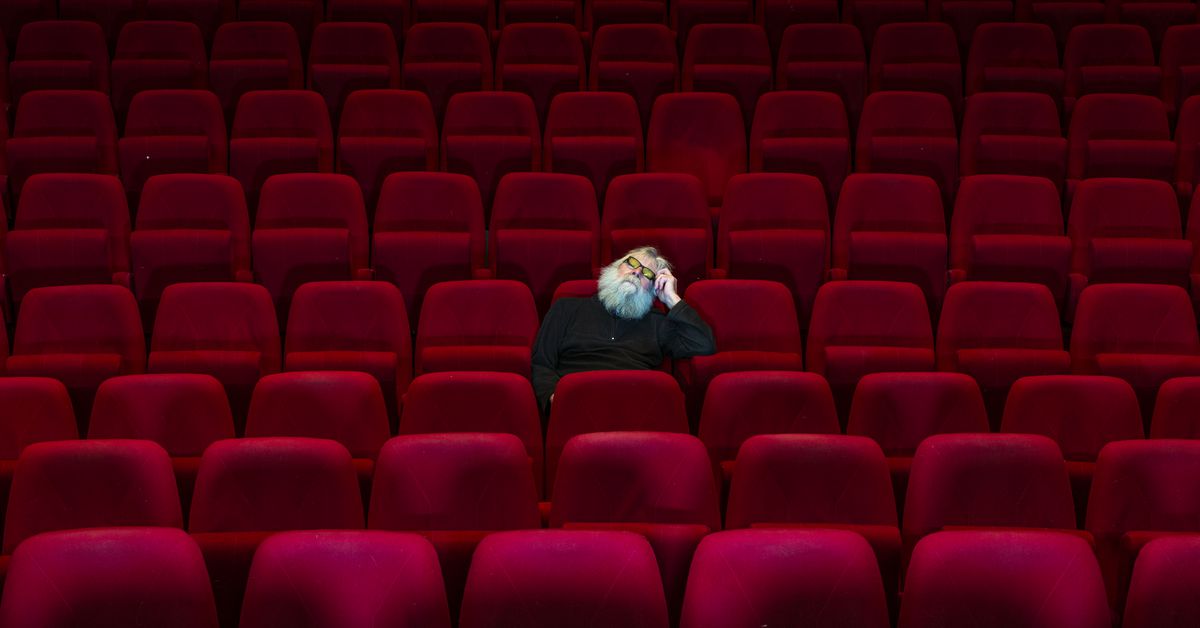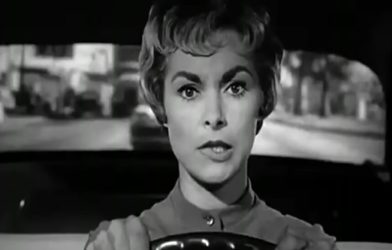When Taylor Swift’s new album dropped last month, it was greeted with one almost universal complaint. With the surprise “double album” edition clocking in at 31 tracks and a cool 122 minutes, critics lamented, the whole thing was way too lengthy.
“Too long,” said the New Yorker.
“Sprawling and often self-indulgent,” said the New York Times.
“Its sense of sprawl creeps down to the song level,” said Pitchfork.
Swift is not alone in being dinged for lack of brevity. Lately, it’s come to seem as though everything, all of pop culture, is too long. Albums. Movies. It all just goes on and on forever, the complaint goes, and we don’t have the time for it.
These criticisms are mostly true, with some caveats. Movie lengths on average have plateaued since the introduction of the talkie 60 years ago, but the length of the average top 10 movie is up from two hours in 1993 to 2 hours and 23 minutes in 2023. Albums, meanwhile, have been trending longer for decades, ever since the CD boom of the 1990s put an end to the space constraints of vinyl. That means they’re longer now, albeit not that much longer than they were a few years ago — an average of 80 minutes in 2022 compared to 73 in 2008.
It’s normal for critics to worry that formats have been corrupted and that while art was perfectly figured out a little while ago, before our time, it’s now on the verge of ruin. That’s a familiar argument. Yet there’s a particular vehemence to the concern about how long runtimes have gotten that suggests this conversation reflects our fears about all the ways the world is changing.
Albums and films used to be shorter because they had to be; the technology they existed on demanded it. With those constraints gone, they exist in a free, wide-open space — and all the rest of us are there too. What, we worry, are we going to do there?
How albums got long and songs got short
Albums used to be confined to the length of a vinyl record: about 45 minutes, counting both sides. Likewise, songs were about three to four minutes long because that was the length that a radio station was willing to go without an ad break. For your album to go longer than that meant that you were making a statement; you were doing something that could not be contained by the physical limitations of your form. For your single to go longer meant that you were so popular and dominant and high-minded that you could simply dare the radio stations not to play your song. You were the Beatles with The White Album, making a double record. You were Don McLean with “American Pie,” making an eight-minute single and charting at No. 1. You were a very big deal.
Then CDs came, and albums started to meander. There’s a limit to how much music you can cram onto a CD, but they’re a lot more expansive than vinyl is, and the new lack of restraints showed. You were free to explore, to be playful, to experiment. Going long didn’t mean you were making some kind of genre-defining statement so much as it meant you were feeling out a way forward in the new world. Pitchfork reports that by the 2000s, at the end of the CD era, the average hip-hop album was 17 tracks and 67 minutes long.
As MP3s took over, the physical constraints that kept albums short vanished completely. In their place came new, less obvious constraints. The post-Napster music industry of the 2010s was a winner-take-all economy in which it was vital to chart on Billboard if you wanted a sustainable career. Starting in 2007, Billboard incorporated streams into its ratings process, and artists quickly figured out the best way to chart was to give fans as many songs as possible to stream. The thinking went that the shorter the song, the more times people would stream it. Albums kept getting longer, but songs started to contract, from four minutes and 14 seconds in 2008 to three minutes and 8 seconds in 2022. Lil Nas X’s “Old Town Road,” which went to No. 1 in 2019, was just one minute and 53 seconds long.
These days, platforms like Spotify and TikTok are also putting their mark on the shape of a song. The Washington Post reports that on Spotify, a stream only counts if the listener stays for at least 30 seconds. That means that there are incentives to grab your listener immediately instead of drawing things out with a long intro. Meanwhile, the possibility of your sound going viral on TikTok places more emphasis on a quick, grabby hook. “Shorter intros, sing the chorus upfront, don’t have long, boring bits when not much happens — these are now the keys for success,” concludes the Post.
How blockbuster movies got long
Movies, too, have been reshaped by their technology, but in different ways than music. Movie length used to be limited to the size of a film reel, which plays about 11 minutes of footage. The standard length of a film is still, to this day, nine reels, or about 90 to 110 minutes long. Even now, when we can shoot movies on digital film and not have to worry about how much it weighs, that average length tends to hold.
As a 2023 Slate article by Sam Adams shows, the outliers in film are the ones that perform well at the box office. Movies on average may be more or less the same length they always were, but it’s easy to see how it doesn’t feel that way when you’re trying to sit through Avengers: Endgame (182 minutes), Oppenheimer (180 minutes), or Killers of the Flower Moon (206 minutes). In 1989, The Little Mermaid was 83 minutes long; the 2023 remake was 135 minutes.
Adams attributes these new lengths to a combination of digital film and the rise of the multiplex. “There’s no obvious penalty for making a movie that runs a little over,” he writes. “The physical constraints that used to make the exhibition and distribution of longer movies more expensive no longer apply: fewer showtimes on a given day mean fewer tickets, but that’s less of an issue when the movie is playing on multiple screens and you no longer have to factor in the cost of manufacturing and shipping larger and heavier film prints.”
The other big factor is the rise of the streaming platforms. Big-time directors now always have the option to jump ship to Netflix and its fellows, where they are promised more creative freedom than ever before. As Vanity Fair reported last year, the time-slashing producers of old are less powerful, and the name-brand directors who can deliver hits for streamers are more so. That means they no longer have to kill their darlings if they don’t want to. More and more often, they don’t.
Even as popular movies swell, though, they are being fed to audiences in increasingly bite-sized portions. On TikTok, accounts dedicated to sharing two-minute movie clips have hundreds of thousands of followers. Last fall, in a marketing push for the musical remake, Paramount put the full run of the original Mean Girls on TikTok in 23 separate clips.
We worry about whether art is the right length because we’re worried that we don’t know how to pay attention anymore
The paradox of it all is that as movies and albums swell, they are shared and sampled in ever smaller chunks. Songs are optimized for Spotify and scenes are optimized for TikTok. Art has somehow become too long and too short at once. The biggest artists and auteurs in this ecosystem are given free rein to be as self-indulgent as they want, the thinking goes, while audiences’ attention spans get even more fragmented. At the root of both these concerns is that technology has degraded the quality of our art and our consumption habits.
The concern about what technology has done to our minds can become, in this system, an argument in favor of long albums and films rather than against them. When entertainment is increasingly sliced and diced to the length of a TikTok video, we have all the more reason to luxuriate in a long movie or album. They will focus our attention once again.
“Movie theaters are one of the few remaining places where it’s possible, at least under ideal circumstances, to do one thing and one thing only for hours at a time,” wrote Adams in his Slate article. “It’s worth crossing your legs to keep it that way.”
Popular art has always been shaped by the technology we use to distribute it; as the saying goes, the medium is the message. As the medium shifts and changes in our new era, we become more anxious and afraid. What if we simply don’t know how to pay attention any longer? How will we experience good art then? What if some artists desperately need editors, while others just need a little bit more of our time?
In music, some artists are intentionally adopting shorter and more curated formats as they explore this brave new era, to the point that there are some plausible trend pieces complaining that albums are too short these days. In 2018, Pitchfork reported that the 15 albums that had reached No. 1 on Billboard’s Top Rap Albums chart by and large hovered around 30 to 40 minutes long. More recently, Ariana Grande’s Eternal Sunshine was 13 tracks and 35 minutes long.
In Cosmo UK, the writer Lydia Venn was perturbed by Eternal Sunshine’s comparative brevity, suspecting that studio interference forced Grande to drop her record too early, before she had generated enough material to fill a record. Eventually, though, Venn comes around to the side of the short album. “Eternal Sunshine was written primarily by Ariana, has no skips, and is some of her best work to date,” she concludes. “So maybe shorter albums can be the future if they’re done primarily because of the artists’ own creativity and authenticity, not to suit a label’s own agenda.” To make a short album now becomes an inverse of the Beatles making The White Album. You’re making a statement, bucking the trends.
Venn’s argument in favor of Grande’s short album is similar to an argument Adams makes in favor of Scorsese’s decision to make Killers of the Flower Moon 206 minutes long without intermission. “The reason there’s no intermission in Killers of the Flower Moon isn’t because Scorsese wants to try his audience’s patience,” Adams writes. “It’s because the movie concerns a string of brutal, racist murders, and the violence needs to feel both mundane and unrelenting. An intermission is an escape valve, and you shouldn’t be able to escape.” In other words, it’s that long because that’s the length that it’s supposed to be. Or, more simply, it’s that long because that’s the length where it gets good.
One of the ambivalences of our moment is that it can be hard to tell when art is long because that’s the length when it gets good, when it’s long because that’s how you make money now, and when it’s long simply because no one said no.
We’re in a moment in which the rules around popular art are changing rapidly. There are very few physical constraints left, only the constraints of the marketplace, which fluctuate wildly with every new hit app. Is there a scenario in which we leave this era to enter one in which a work of art is only as long or as short as it has to be? If we ever make it there, will we recognize it when it happens?









